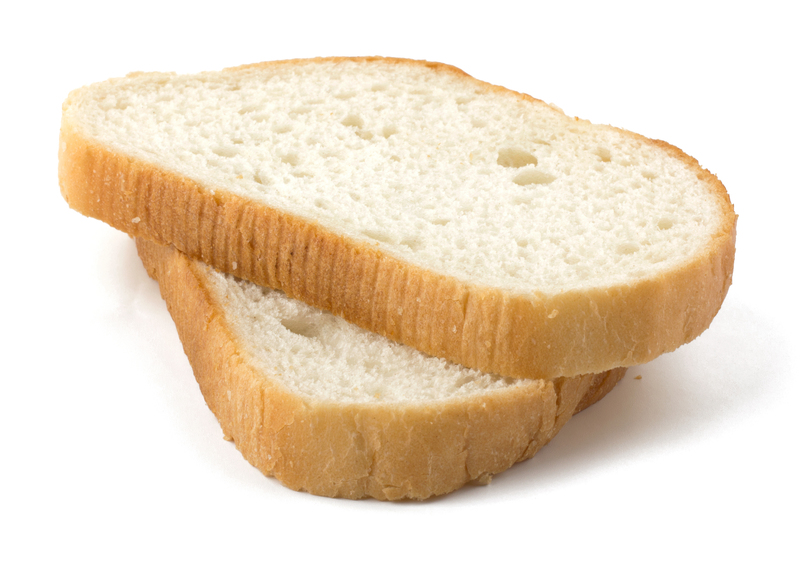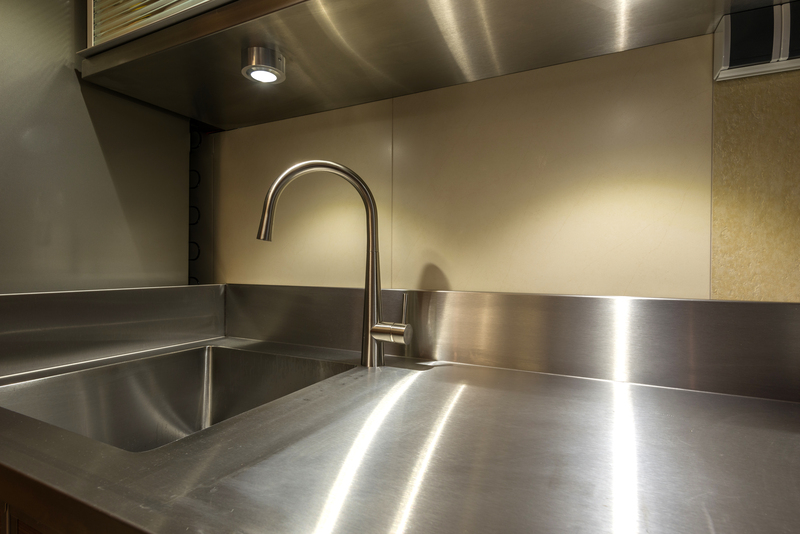Building a Sustainable House Cleaning Practice
Posted on 04/09/2025
Building a Sustainable House Cleaning Practice: Your Guide to Eco-Friendly Cleaning
Are you curious about building a sustainable house cleaning practice? As more homeowners and cleaning professionals become conscious of their carbon footprint, adopting environmentally friendly cleaning methods is no longer just a trend--it's a necessity. This comprehensive guide covers everything you need to know about making your cleaning routine green, from eco-friendly products to sustainable habits that benefit the planet and your health.
What Is a Sustainable House Cleaning Practice?
A sustainable house cleaning practice goes beyond just removing dirt and dust--it means incorporating strategies, products, and behaviors that reduce waste, minimize harmful chemical usage, and lower energy and water consumption. Ultimately, a sustainable cleaning routine strives to protect the health of your household and the environment.
- Reducing toxic chemical exposure to people and pets
- Minimal use of single-use plastics and disposable materials
- Employing eco-friendly cleaning products and tools
- Reducing water and energy use
- Minimizing waste and promoting recycling

Why Prioritize Sustainability in House Cleaning?
The benefits of sustainable cleaning practices are far-reaching. Making mindful choices about the cleaning products and methods you use can have lasting impacts:
- Better indoor air quality thanks to natural ingredients and fewer artificial fragrances
- Reduced risk of skin, eye, and respiratory irritations for your family
- Protects aquatic life and water supplies from chemical run-off
- Supports global efforts to minimize waste and resource depletion
- Can lead to cost savings over time by adopting reusable products and efficient methods
The Environmental Cost of Conventional Cleaning
Traditional house cleaning routines rely heavily on single-use plastics, aggressive detergents, and throw-away tools. Many commercial cleaners contain ingredients like phosphates, chlorine, ammonia, and VOCs (volatile organic compounds) that not only pollute water systems but can also have adverse effects on your health.
- 120,000 tons of cleaning chemicals enter waterways in North America annually
- Millions of single-use wipes and paper towels go to landfill every day
- Plastic bottles from cleaning products can take over 450 years to decompose
Switching to a sustainable house cleaning practice is vital for environmental conservation and personal well-being.
Core Principles of a Sustainable Cleaning Routine
1. Choose Eco-Friendly Cleaning Products
Look for green-certified cleaning products with plant-based ingredients and minimal chemical content. Reputable certifications include EPA Safer Choice, Green Seal, EcoLogo, and other third-party eco-labels.
- Read labels: Avoid products with phosphates, chlorine, synthetic dyes, and unnecessary fragrances.
- Purchase concentrates: Concentrated cleaners minimize packaging waste.
- DIY alternatives: Use household staples such as vinegar, baking soda, lemon, and castile soap for homemade cleaning solutions.
2. Use Sustainable Tools and Materials
Replace disposable wipes and paper towels with reusable microfiber cloths, washable mops, and natural sponges. Not only do these alternatives last longer, but they also clean more efficiently without creating extra waste.
- Bamboo and wooden brushes: Compostable and biodegradable at end of life
- Glass and stainless steel spray bottles: Safe for reuse and chemical-free
- Old t-shirts and towels: Upcycled as rags for dusting and scrubbing
3. Reduce Water and Energy Usage
A sustainable home cleaning routine involves conscious water and energy consumption. Here's how you can minimize resource use:
- Spot cleaning: Tackle stains or messes immediately to avoid large-scale clean-ups.
- Full loads: Run dishwashers and washing machines only when full to maximize efficiency.
- Cold water cleaning: Washing surfaces and fabrics with cold or lukewarm water saves energy.
- Efficient tools: Opt for energy-efficient vacuums and appliances.
4. Minimize and Manage Waste
Building a sustainable cleaning practice means rethinking what you throw away. Compost biodegradable waste, properly recycle packaging, and seek out reusable products.
- Switch from single-use cleaners and tools to refillable and washable options.
- Recycle cardboard packaging and plastic containers whenever possible.
- Compost kitchen waste generated during cleaning, such as lemon peels and used tea bags.
5. Make Cleaning a Routine, Not a Chore
Consistency is key. Small, regular cleaning tasks prevent the need for harsh interventions later on, maintaining hygiene while saving time and resources.
- Create a sustainable cleaning schedule and stick to it
- Involve all household members--lead by example!
- Evaluate and adjust your practices for continual improvement.
Transitioning to a Sustainable House Cleaning Practice
Step 1: Audit Your Current Cleaning Habits
Start by reviewing your existing products, tools, and techniques. Identify the common single-use items or harsh chemicals you rely on. Remove anything unnecessary or harmful and research eco-friendly alternatives.
- Read product labels for ingredients
- Track resource use (water, energy, disposables)
- Document current waste output
Step 2: Set Sustainable Cleaning Goals
Write down both short-term and long-term goals for your sustainable house cleaning practice. For example:
- ✓ Switch one cleaning product per week to an eco-friendly alternative
- ✓ Eliminate single-use plastic sponges within one month
- ✓ Reduce laundry loads by washing only full baskets
Measurable goals help you track your progress and maintain motivation.
Step 3: Replace and Repurpose
As you run out of traditional supplies, replace them with sustainable house cleaning products and tools. Repurpose old items into cleaning rags or storage containers to extend their life before discarding.
- Use glass jars as storage for homemade cleaners
- Repurpose old toothbrushes for scrubbing grout and tight spaces
Step 4: Learn About Green Cleaning Ingredients
Familiarize yourself with natural cleaning agents like vinegar, baking soda, citric acid, and essential oils. These ingredients can tackle 98% of regular household messes.
- Vinegar: Dissolves minerals, soap scum, and neutralizes odors
- Baking Soda: Gentle abrasive that lifts stains and deodorizes
- Lemon Juice: Cuts through grease and kills bacteria
- Essential Oils: Add pleasant scent and antimicrobial properties
Step 5: Educate Your Household & Clients
If you're a professional or part of a family, communicate the importance of sustainable cleaning to everyone involved. Share your methods and encourage eco-conscious habits.
- Host regular family meetings or client briefings
- Explain label meanings and the impact of greener choices
- Encourage input and feedback to improve the system
Advantages of Sustainable House Cleaning Practices for Professionals
If you run a cleaning business, adopting a sustainable cleaning approach can differentiate your brand. Modern clients are increasingly aware of environmental concerns and will thank you for your efforts!
- Boosts your reputation as an eco-responsible business
- Appeals to health-conscious clients
- Can often reduce operating costs (less waste, fewer chemicals)
- May qualify you for green certifications and specialized insurance
Certification and Training for Sustainable Cleaning
Consider earning green cleaning certifications through industry organizations. Look for online and in-person workshops on best practices, product selection, and sustainable operations.
- Green Seal Certified cleaning services
- LEED cleaning practices for commercial accounts
- Ongoing staff training in eco-safe procedures
Sustainable House Cleaning: Room-by-Room Tips
Kitchen
- Clean countertops with diluted vinegar and warm water
- Use reusable dish cloths instead of paper towels
- Compost citrus peels and coffee grounds
- Run dishwasher only when full to save water and energy
Bathroom
- Descale showerheads and faucets with vinegar soaks
- Use baking soda to scrub sinks, tubs, and tiles
- Choose recycled or bamboo toilet paper
- Install low-flow showerheads
Living Room
- Dust with damp reusable microfiber cloths
- Vacuum with HEPA-filtered, energy-efficient vacuums
- Choose rugs and upholstery made from organic fibers
Bedroom
- Launder bedding and curtains in cold water with eco-friendly detergent
- Avoid synthetic air fresheners--use open windows or a few drops of essential oils in water
- Declutter and donate unused items rather than discarding
Eco-Friendly Cleaning Product Recipes
You don't need expensive products to maintain a sustainable house cleaning practice. Here are some simple DIY recipes:
All-Purpose Surface Cleaner
- 1 cup white vinegar
- 1 cup water
- 10 drops of citrus or tea tree essential oil
Mix in a reusable spray bottle. Shake and spray for counters, tiles, and more.
Natural Glass Cleaner
- 1 cup water
- 1 cup rubbing alcohol (or vinegar for extra eco-friendliness)
- 1 tablespoon cornstarch
Shake and spray on glass. Wipe with lint-free cloth for streak-free shine.
Fresh-Scent Carpet Deodorizer
- 1 cup baking soda
- 10 drops of lavender or eucalyptus oil
Sprinkle on carpet, let sit 15 minutes, and vacuum.

Common Pitfalls and How to Avoid Them
Transitioning to eco-friendly house cleaning isn't always perfect. Watch out for these common mistakes:
- Greenwashing: Some companies use words like "natural" or "eco" without true standards. Double-check certifications.
- Avoiding all store-bought products: Not all are harmful--many brands are genuinely sustainable.
- Not adapting routines: Even green products should be used sparingly and thoughtfully.
- Trying to change everything at once: Gradual changes are more sustainable long-term.
Conclusion: Start Your Sustainable House Cleaning Journey Today
Adopting a sustainable house cleaning practice is one of the most impactful changes you can make for your household and the environment. By switching to non-toxic products, choosing reusable materials, and being mindful of resources, you can contribute to a healthier planet, save money, and protect your family's health. Remember -- sustainability is a journey, not a destination. Start small, be consistent, and enjoy a cleaner, greener, and brighter home!
- Audit your current practices
- Set realistic sustainability goals
- Educate and involve your household or team
- Celebrate progress -- every green choice counts!
Ready to build your eco-friendly cleaning routine? Begin today, and make every step towards sustainability count!




